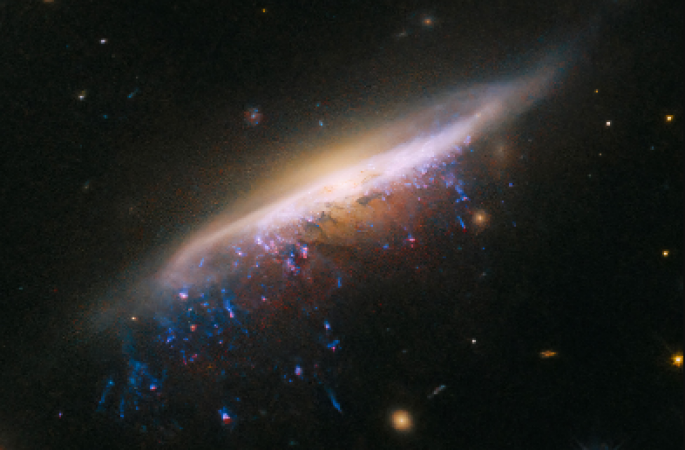
USA: In a recent image of stunning and dazzling galaxies, the Hubble Space Telescope focused on capturing a massive galaxy of stars that resembles a jellyfish, known as JW100, according to the National Aeronautics and Space Administration. Which is located 800 million light years away. From Earth in the constellation of Pegasus (NASA).
ESA (European Space Agency) released the image on 20 March. Epileptic objects can be seen glowing in the dark in many distant, small-looking galaxies around the recently discovered Milky Way.
The Jellyfish galaxy can be seen in the lower right corner of the image, just below the larger galaxy known as IC 5338 shining brightly at the top of the image.
Also Read: ASUS will introduce its ROG Phone 7 and Phone 7 Ultimate to the world very soon
Recently, NASA announced that it is planning to build the Nancy Grace Roman Space Telescope, which will be much more powerful than Hubble and can capture precise images from distant places in space.
The James Webb Telescope, which has taken some amazing images of distant galaxies and stars, is one of the most famous space telescopes.
The galaxy looks like a jellyfish in the image because the thread-like stars are moving away from the center of the galaxy.
Also Read: In the near future WhatsApp might let users send video messages
"These are known as tendrils and are formed by ram pressure stripping, which occurs when galaxies encounter the diffuse gas that diffuses into galaxy clusters," according to an ESA statement.
ESA officials explained that as galaxies pass through this twinkling gas, it acts as a headwind, removing gas and dust from the galaxy and resulting in the trailing streamers that prominently adorn JW100 .
ESA officials also said in their statement that "cd galaxies often display multiple nuclei, as they are thought to have evolved by consuming smaller galaxies whose nuclei may have taken a very long time to be absorbed. "
Also Read: There may be signs of life outside of Earth in space dust and planet debris
They said a significant population of globular clusters can be seen in the bright points of light that decorate its outer edges.
The statement said these tendrils "represent star formation under extreme conditions, and may aid astronomers in understanding the process of star formation elsewhere in the universe."